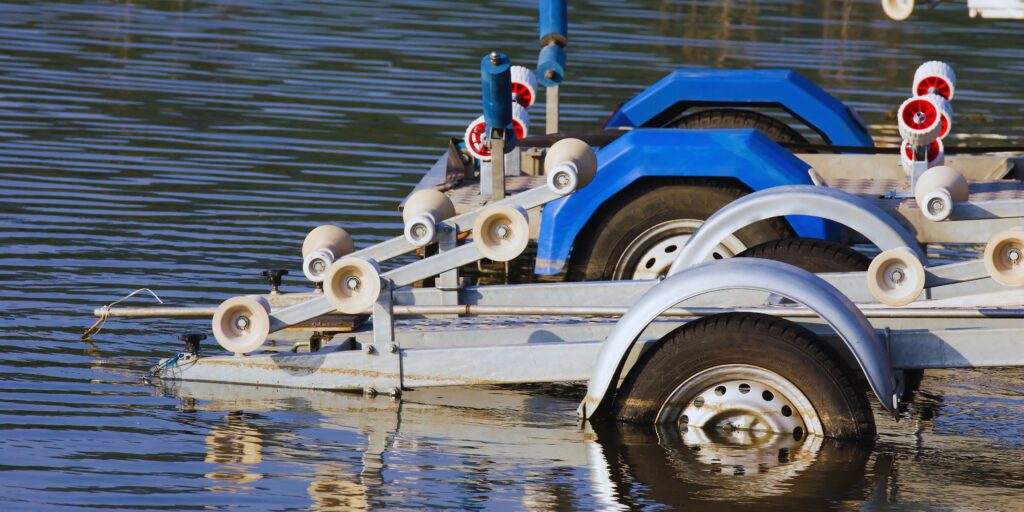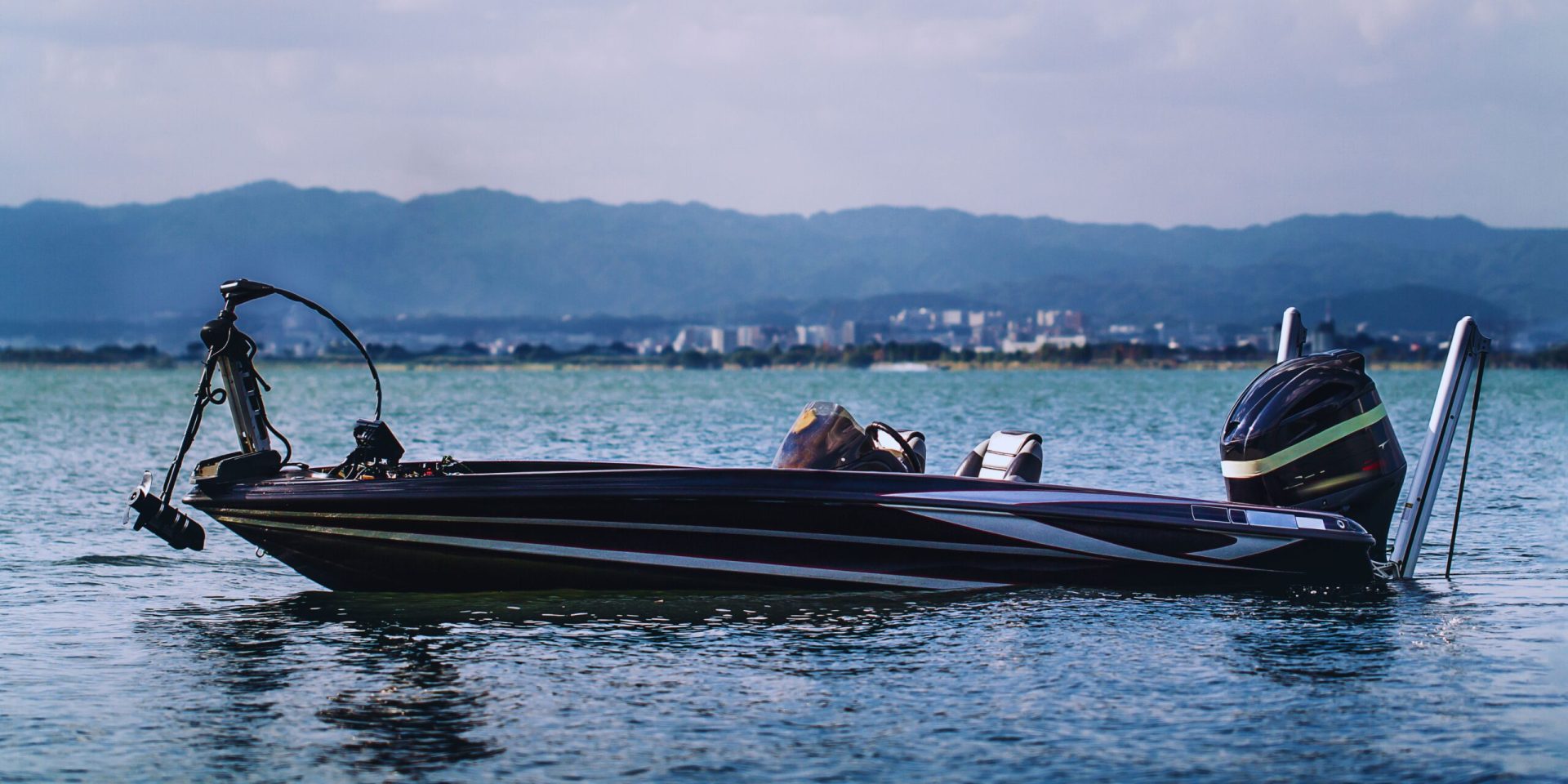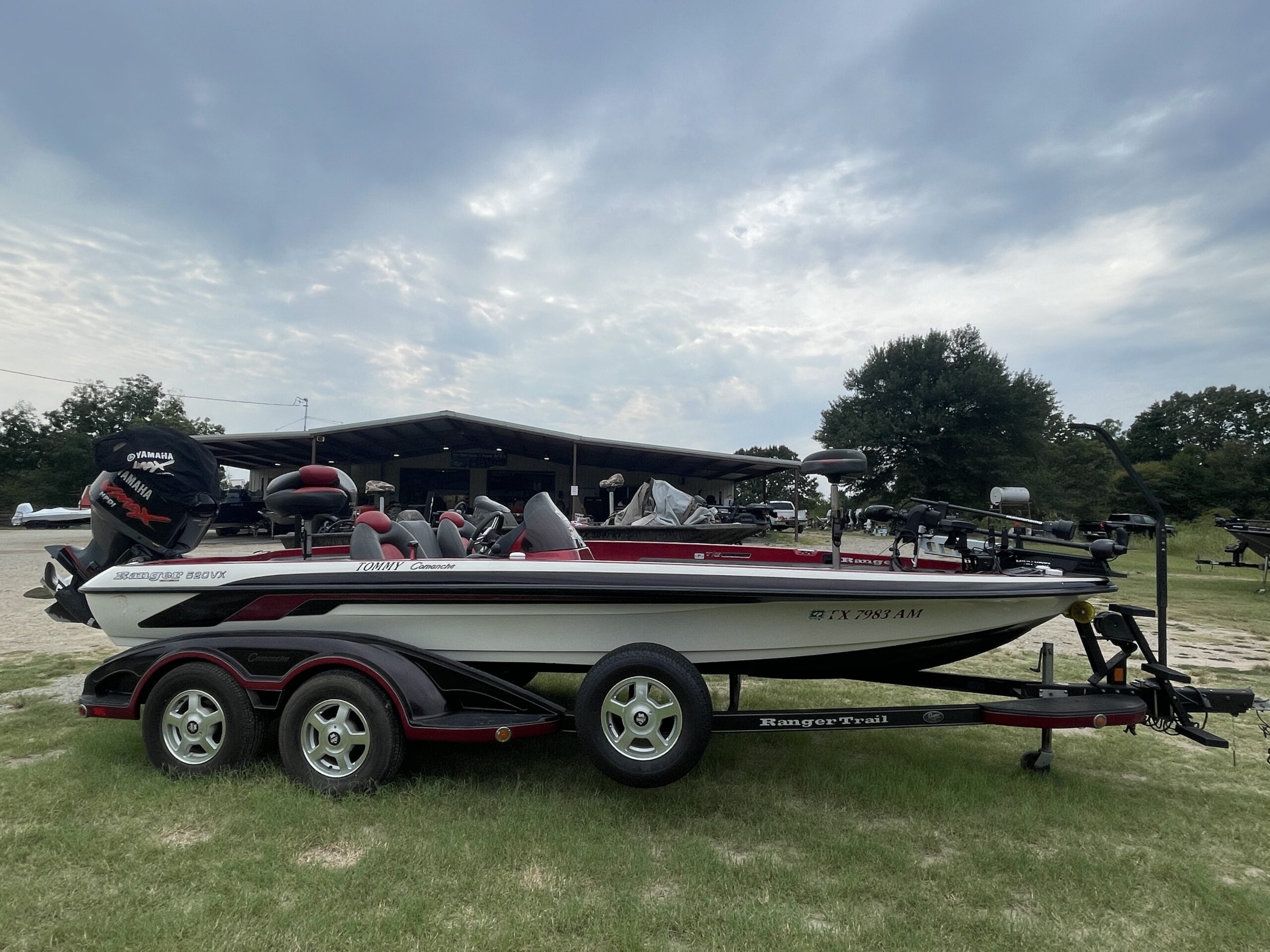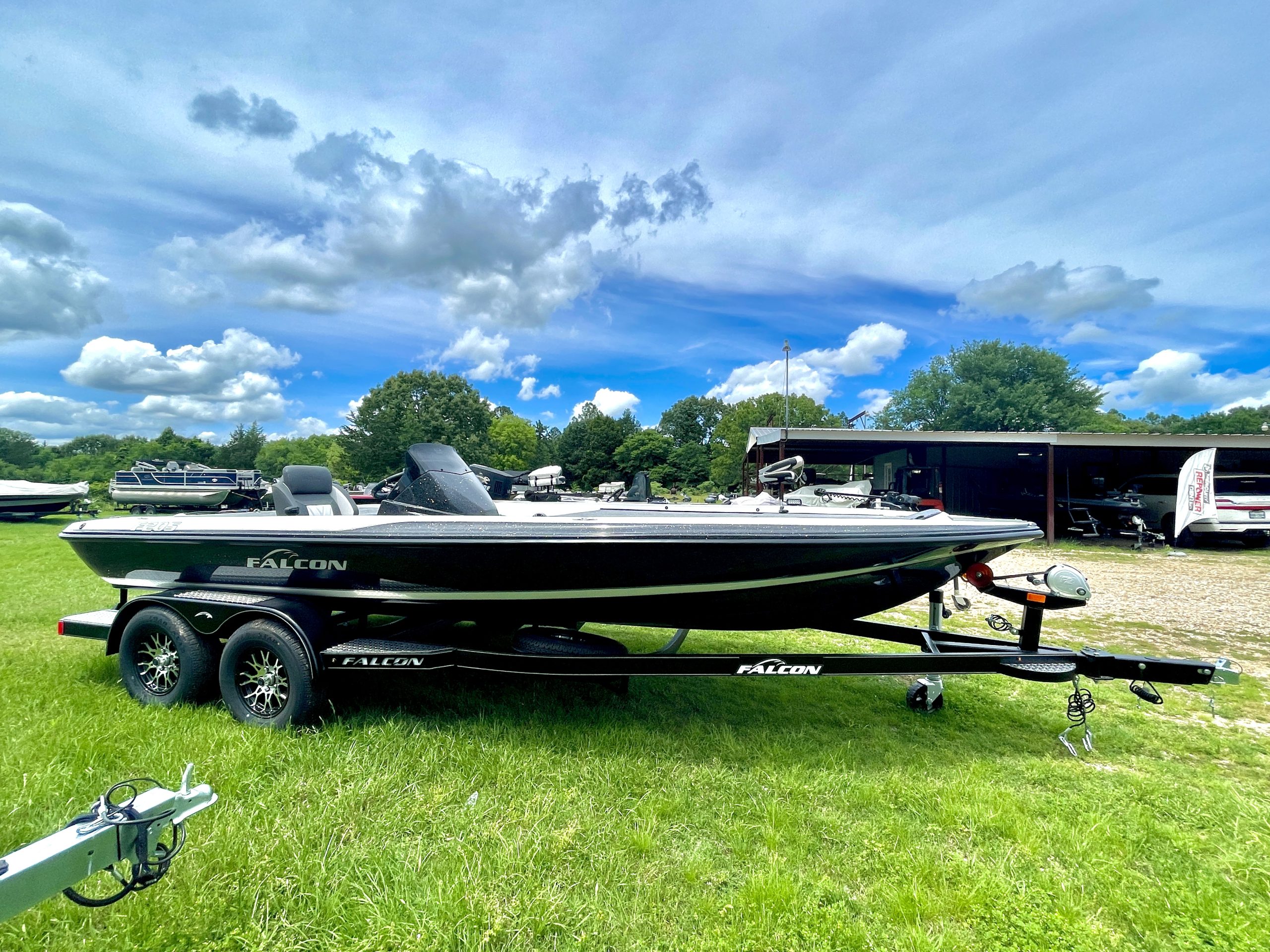Are you a proud owner of a bass boat but not sure how to properly store and trailer it? The safety and longevity of your prized possession depend on it! Whether you’re a seasoned angler or just starting out, knowing the ins and outs of safe storage and trailering is essential for a stress-free fishing experience.
Imagine this scenario: you’ve had a great day on the water, reeling in bass after bass, but now it’s time to head home. What’s the next step? How do you ensure your bass boat stays in top condition until your next fishing trip?
In this ultimate guide, we’ll delve into the nitty-gritty details of safely storing and trailering your bass boat. We’ll provide you with expert recommendations and practical tips that will help you avoid costly damages and protect your boat from the elements. From winterizing to essential fuel system maintenance, we’ve got you covered.
So, if you want to keep your bass boat in tiptop shape and enjoy many more successful fishing trips, grab your notepad and dive into this comprehensive guide on safe storage and trailering of bass boats. Your boat will thank you for it!
Introduction to Safe Storage and Trailering of Bass Boats

Proper storage and trailering are vital for maintaining the safety and longevity of your bass boat. By following essential recommendations and expert tips, you can ensure a stress-free fishing experience and avoid costly damages. Whether you’re preparing your boat for winter storage or getting ready to hit the road, this comprehensive guide will provide you with the knowledge you need.
To protect your bass boat during the winter months, it’s crucial to winterize it properly. This involves steps such as changing the engine oil, draining water from the engine, maintaining the fuel system, and taking care of the battery. Additionally, protecting the exterior of your boat is essential. Applying wax and using a fitted cover will shield your boat from the elements and preserve its appearance.
Taking care of the interior is equally important. Ventilation and dehumidification will prevent moisture buildup and protect the boat’s interior components. Removing valuables and electronics from the boat when not in use is also recommended to ensure their safety.
Proper storage and covering play a significant role in protecting your bass boat. Choosing a suitable storage location and using a high-quality boat cover will safeguard your investment from potential damage.
In the next sections, we will delve into each topic in more detail, providing you with step-by-step instructions and expert advice for safe storage and trailering of your bass boat. Let’s dive in and ensure the longevity and performance of your beloved bass boat.
Preparing Your Bass Boat for Winter Storage
Properly preparing your bass boat for winter storage is essential to protect its components from the harsh weather and ensure its longevity. Follow these key steps to winterize your bass boat and keep it in top condition:
Engine Oil Change
Before storing your bass boat for the winter, perform an oil change. Old oil can become degraded over time and may leave harmful deposits that can damage the engine. Use the manufacturer-recommended oil and replace it according to the specified intervals.
Draining Water from the Engine
Draining water from the engine is crucial to prevent freezing and potential damage. Start by running the engine to warm it up, then use a flush kit to drain any remaining water. Properly drain the water from the cooling system, exhaust manifold, and risers to prevent corrosion and freezing.
Fuel System Maintenance
To avoid fuel-related issues during storage, add a fuel stabilizer to your bass boat’s gas tank. This additive will prevent fuel degradation and keep the fuel system clean. Fill the gas tank to its maximum capacity to reduce the amount of air inside, which can lead to condensation and potential fuel system damage.
Battery Maintenance and Storage
Properly maintaining and storing your boat’s battery is crucial. Start by disconnecting the battery and removing it from the boat. Clean the battery terminals and apply a corrosion inhibitor. Store the battery in a cool, dry place and periodically recharge it throughout the winter to prevent it from losing its charge.
By following these key steps to winterize your bass boat, you can ensure that it remains in optimal condition during the storage months. Proper maintenance will help protect the engine, fuel system, and battery, allowing you to enjoy a hassle-free boating season when spring arrives.
Remember, always refer to your bass boat’s owner manual for specific instructions and recommendations regarding winterization procedures.
Protecting Your Bass Boat’s Exterior
To ensure the longevity and pristine condition of your bass boat, it’s essential to take proper care of its exterior. Here are some expert tips on how to protect your boat’s exterior:
1. Regular Wax Application
Applying a high-quality wax to your bass boat not only enhances its appearance but also forms a protective barrier against UV rays, oxidation, and water damage. Choose a marine-grade wax and apply it at least twice a year, following the manufacturer’s instructions.
2. Use a Fitted Cover
Invest in a well-fitted boat cover specifically designed for your bass boat. A good cover shields your boat from exposure to the elements, including rain, dust, and harmful UV rays. Additionally, it prevents debris from accumulating, reducing the time and effort required for cleaning.
3. Proper Cleaning and Maintenance
Regularly clean your boat’s exterior to remove dirt, grime, and salt residue. Use mild, non-abrasive boat cleaners and a soft brush or sponge to avoid damaging the gel coat. Rinse thoroughly with freshwater after cleaning to remove any residual cleaning agents.
4. Protective Accessories
Consider installing protective accessories, such as dock fenders and rubbing strakes, to minimize the risk of impact damage during docking or trailering. These accessories help protect your boat’s hull from scratches, scrapes, and dings.
5. Storing in a Covered Area
Whenever possible, store your bass boat in a covered area, such as a garage, storage facility, or boat shed. This provides additional protection against the harsh elements and minimizes exposure to UV radiation, which can lead to fading of the boat’s gel coat.
By following these tips, you can ensure that your bass boat’s exterior remains in top-notch condition, allowing you to spend more time on the water and less time on maintenance and repairs. Remember, protecting the exterior of your boat is not only about aesthetics but also about maintaining its value and preserving its longevity.
Taking Care of Your Bass Boat’s Interior
When it comes to properly storing and trailering your bass boat, taking care of the interior is just as important as protecting the exterior. Here are some essential tips to ensure the longevity and safety of your boat’s interior.
Ventilation and Dehumidification
Proper ventilation is crucial to prevent mold, mildew, and musty odors from developing inside your bass boat. When storing your boat, make sure to open all compartments, hatches, and windows to allow air circulation. This helps to minimize moisture buildup and maintain a fresh interior. Additionally, consider using moisture-absorbing products or dehumidifiers to further reduce humidity levels and prevent condensation.
Remove Valuables and Electronics
Before storing your bass boat, it is essential to remove any valuables and electronics from the interior. This includes fishing gear, personal belongings, and electronic devices. Storing these items separately not only protects them from potential theft but also prevents any damage that could occur during transportation.
Keeping your bass boat’s interior clean, dry, and free from clutter is a vital step in maintaining its overall condition. By following these tips, you’ll ensure that your boat’s interior remains in top-notch shape, ready for your next fishing adventure. Remember, taking care of your bass boat’s interior is just as important as protecting the exterior.
Proper Boat Storage and Covering
When it comes to the safe storage and trailering of your bass boat, choosing the right storage location and using a suitable boat cover are crucial. These steps not only ensure the safety and preservation of your valuable investment but also contribute to a stress-free fishing experience. Here are some expert recommendations for proper boat storage and covering:
Selecting a Suitable Storage Location
1. Indoor Storage: If possible, opt for indoor storage facilities such as marinas, boat storage facilities, or personal garages. Indoor storage provides the best protection against harsh weather conditions and minimizes exposure to potential damage.
2. Covered Outdoor Storage: If indoor storage is not available, look for covered outdoor storage options. This could include carports, boat sheds, or covered docks. Although not as ideal as indoor storage, covered outdoor storage still offers some protection from the elements.
Choosing the Right Boat Cover
1. Size and Fit: Ensure that the boat cover is specifically designed for your bass boat’s make and model. A well-fitted cover will provide better protection against dust, debris, and UV rays.
2. Material: Opt for a boat cover made from durable, weather-resistant materials such as marine-grade polyester or solution-dyed acrylic. These materials are excellent at repelling water, resisting UV damage, and preventing mold and mildew buildup.
3. Ventilation: Look for boat covers that feature vents or breathable panels. Proper ventilation helps to prevent the buildup of moisture, which can lead to mold and mildew growth.
4. Secure Fastening: Ensure that the boat cover has a secure and adjustable fastening system. This will keep the cover in place during transport and protect your boat from strong winds.
Remember, proper boat storage and covering are essential for protecting your bass boat from the elements and extending its lifespan. By choosing the right storage location and using a well-fitted cover, you can ensure that your boat remains in optimal condition for your next fishing adventure.
Quote:
“Choosing a suitable storage location and using the right boat cover are key factors in safeguarding
your bass boat. Indoor storage or covered outdoor storage options provide the best protection, while a well-fitted cover made from durable materials ensures longevity.” –
With these recommendations in mind, you can confidently select the best storage location and boat cover to keep your bass boat safe and in prime condition.
Winterizing LiFePO4 Batteries
When it comes to winterizing your bass boat, don’t forget to pay special attention to your LiFePO4 batteries. These advanced lithium batteries require specific steps to ensure their optimal performance and longevity during the winter months. Here’s what you need to do:
1. Disconnect the batteries: Start by disconnecting the batteries from the boat’s electrical system to prevent any potential drain during storage.
2. Clean and inspect: Thoroughly clean the battery terminals and check for any signs of corrosion or damage. If necessary, gently scrub the terminals with a wire brush.
3. Charge the batteries: Fully charge the LiFePO4 batteries before storing them. This ensures that they will maintain their charge and be ready for use when you’re back on the water.
4. Store in a cool, dry place: Find a cool and dry location to store the batteries. Extreme temperatures can negatively impact their performance.
By following these steps, you can properly winterize your LiFePO4 batteries and ensure that they are in the best condition for your next fishing season.
Trailering Tips: Ott DeFoe’s Expert Advice
When it comes to trailering your bass boat, following expert advice can make a world of difference. Ott DeFoe, a renowned professional angler, shares his top tips to ensure a safe and smooth towing experience. Let’s dive into Ott DeFoe’s valuable trailering advice:
Walk 360° Around the Boat
Before hitting the road, take a few minutes to walk completely around your boat. This allows you to inspect the trailer, tires, lights, and the boat itself for any visible issues or potential problems. Look for loose bolts, worn tires, or anything that may need attention before embarking on your fishing trip.
Tend to the Jack Plate and Transom
Ensure that the jack plate is properly tightened and secure. It’s also important to inspect the transom straps and make sure they are tight, keeping the boat in place during transportation.
Straighten the Outboard
Check that the outboard motor is straight before hitting the road. Sometimes, it can get turned slightly during loading or transit. This small adjustment helps maintain good alignment and reduces stress on the boat and trailer.
Check the Prop and Plugs
Inspect the propeller for any debris or damage that may affect its performance. Additionally, make sure the plugs are snug and in place. These small but significant checks can help prevent any unforeseen issues while on the water.
By following Ott DeFoe’s expert trailering tips, you can ensure a worry-free journey to your fishing destination. Remember to walk around your boat, tend to the jack plate and transom, straighten the outboard, and check the prop and plugs. Happy trailering and tight lines!
þÿEssential Trailering Gear: Trailer Essential
To ensure a safe and smooth towing experience for your bass boat, it is crucial to have essential trailering gear on hand. These tools and accessories can help you avoid potential mishaps and protect your valuable investment. Here are some must-have trailer essentials:
1. Trailer Hitch Lock: This adds an extra layer of security to prevent theft and unauthorized access to your bass boat while it’s being towed.
2. Trailer Jack: A sturdy and reliable trailer jack makes hitching and unhitching your boat a breeze, allowing for easy maneuverability.
3. Tie-Down Straps: These heavy-duty straps help secure your bass boat to the trailer, ensuring it stays in place during transportation.
4. Spare Tire and Tools: A flat tire can quickly ruin a fishing trip, so always carry a spare tire that is properly inflated and in good condition. Additionally, have the necessary tools, such as a lug wrench, to change the tire if needed.
5. Trailer Lights and Wiring: Ensure your trailer lights are functioning properly and all wiring connections are secure. This is essential for maintaining visibility and signaling other drivers on the road.
6. Safety Chains: These chains provide an extra level of safety by connecting your bass boat trailer to the towing vehicle. In the event of a hitch failure, the chains will prevent your boat from completely separating from the vehicle.
7. Trailer Brake Controller: If your trailer is equipped with brakes, a brake controller is necessary to control and synchronize the braking system between your vehicle and the trailer.
8. Wheel Chocks: These handy devices help keep your bass boat trailer in place, preventing any accidental rolling or movement when parked.
Always remember to inspect and maintain your trailering gear regularly to ensure its reliability. Having the right tools and equipment on hand not only enhances the safety of your bass boat during transportation but also allows for a worry-free fishing experience.
Final Thoughts on Safe Storage and Trailering of Bass Boats

In conclusion, ensuring the safe storage and trailering of your bass boat is essential for its longevity and your peace of mind. By following the expert recommendations outlined in this guide, you can protect your investment and enjoy stress-free fishing experiences for years to come.
Key takeaways for safe storage include preparing your bass boat for winter by winterizing the engine, draining water, and maintaining the fuel system. Protecting the exterior involves applying wax and using a fitted cover to shield it from the elements. Additionally, taking care of the interior involves adequate ventilation, dehumidification, and removing valuables and electronics.
Proper storage location selection and choosing the right boat cover are crucial for preserving your bass boat’s condition. Winterizing LiFePO4 batteries requires specific steps to maintain optimal performance.
When it comes to trailering, follow Ott DeFoe’s expert advice, such as walking 360° around the boat, tending to the jack plate and transom, straightening the outboard, and checking the prop and þÿplugs. Having essential trailering gear, like Trailer Essentials!”, ensuexperience.
Remember, by following these recommendations, you can protect your bass boat from damages, extend its lifespan, and have worry-free fishing adventures. Happy boating!




